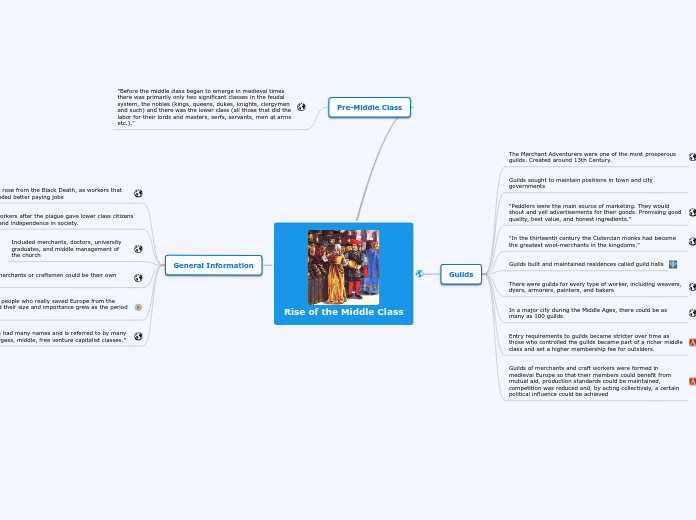Guilds
Guilds sought to maintain positions in town and city governments
"Peddlers were the main source of marketing. They would shout and yell advertisements for their goods. Promising good quality, best value, and honest ingredients."
"In the thirteenth century the Cistercian monks had become the greatest wool-merchants in the kingdoms."
There were guilds for every type of worker, including weavers, dyers, armorers, painters, and bakers
In a major city during the Middle Ages, there could be as many as 100 guilds.
Entry requirements to guilds became stricter over time as those who controlled the guilds became part of a richer middle class and set a higher membership fee for outsiders.
Guilds of merchants and craft workers were formed in medieval Europe so that their members could benefit from mutual aid, production standards could be maintained, competition was reduced and, by acting collectively, a certain political influence could be achieved
Pre-Middle Class
"Before the middle class began to emerge in medieval times there was primarily only two significant classes in the feudal system, the nobles (kings, queens, dukes, knights, clergymen and such) and there was the lower class (all those that did the labor for their lords and masters, serfs, servants, men at arms etc.)."
General Information
The middle class rose from the Black Death, as workers that remained demanded better paying jobs
The lack of workers after the plague gave lower class citizens more power and independence in society.
Included merchants, doctors, university graduates, and middle management of the church
People such as merchants or craftsmen could be their own bosses

